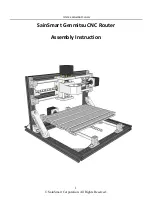
PRG AV4202N
© (2007) Pirelli Broadband Solutions S.p.A. All Rights Reserved. Proprietary Use Pursuant to Cover Page Instructions.
Troubleshooting
OGU 930500275-A1
155
WIRELESS NETWORKING
Ensure that you have an 802.11b, 802.11g or 802.11n wireless adapter for
each wireless computer, and that it is correctly installed and configured. Ver-
ify that each Wireless computer has either Windows 98SE or higher or MAC
OS 10.x or higher.
If you have a wired and a wireless NIC in the same computer, ensure that
the wired NIC is disabled.
Check the status of the Router Wireless LED.
Ensure that the TCP/IP settings for all devices are correct.
Ensure that the Wireless Clients are using the same SSID or Service Area
Name as the Router. The SSID is case-sensitive.
Ensure that the encryption method and level that you use on your clients are
the same as those configured on the Router. The Router cannot simultane-
ously support WPA and WEP encryption.
Ensure that you have the Wireless computer enabled in the list of allowed
MAC addresses if you are using MAC Address Filtering on the Router.
If you are having difficulty connecting or are operating at a low speed try
changing the antenna positions on the rear of the Router. For more effective
coverage you can try reorientating your antenna. Additionally consider mov-
ing the wireless computer closer to the Router to confirm that the building
structure or fittings are not adversely affecting the connectivity. If this re-
solves the problem consider relocating the Wireless computer or the Router,
or trying a different channel on the Router.
Sources of interference: The 2.4GHz ISM band is used for 802.11b, 802.11g
and 802.11n. This is generally a licence free band for low power applica-
tions, and you may have other devices at your location that operate in this
frequency band. You should take care to ensure that there are no devices
like microwave ovens for example close to the Router or wireless computers
as this could affect receiver sensitivity and reduce the performance of your
network. If you are unsure try relocating both the wireless computers and the
Router to establish whether this problem exists.
Most wireless computer Adapters will scan the channels for the wireless
Router. If a wireless computer has not located the Router then try initiating a
search manually if the client software supports this feature or manually set
the channel on your wireless computer to correspond to the Router channel
number. Please refer to your Wireless computer adapter documentation and
vendor to do this.
Speed of connection: The 802.11b/g and 802.11n standards will automati-
cally choose the best speed depending on the quality of your connection. As
the signal quality weakens then the speed falls back to a lower speed. The
speeds supported by 802.11g are 54 Mbps, 48 Mbps, 36 Mbps, 24 Mbps, 18
Mbps, 12 Mbps, and 6 Mbps. The speeds supported by 802.11b are 11
Mbps, 5.5 Mbps, 2 Mbps and 1 Mbps. And the 802.11n supports until
100Mbps.In general the closer you are to the Router the better the speed. If
you are not achieving the speed you had anticipated then try moving the an-
tenna on the Router or moving the Wireless computer closer to the Router.
In an ideal network the Router should be located in the centre of the network















































